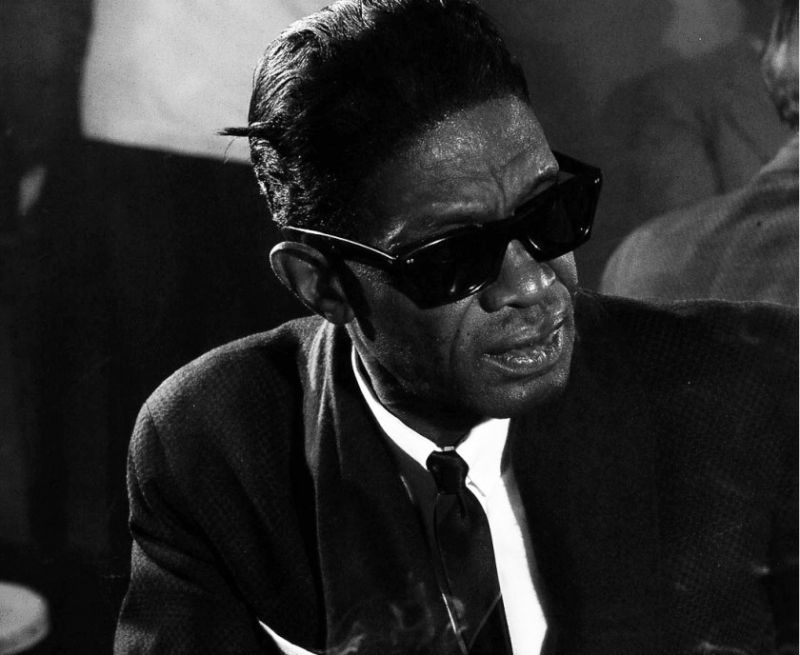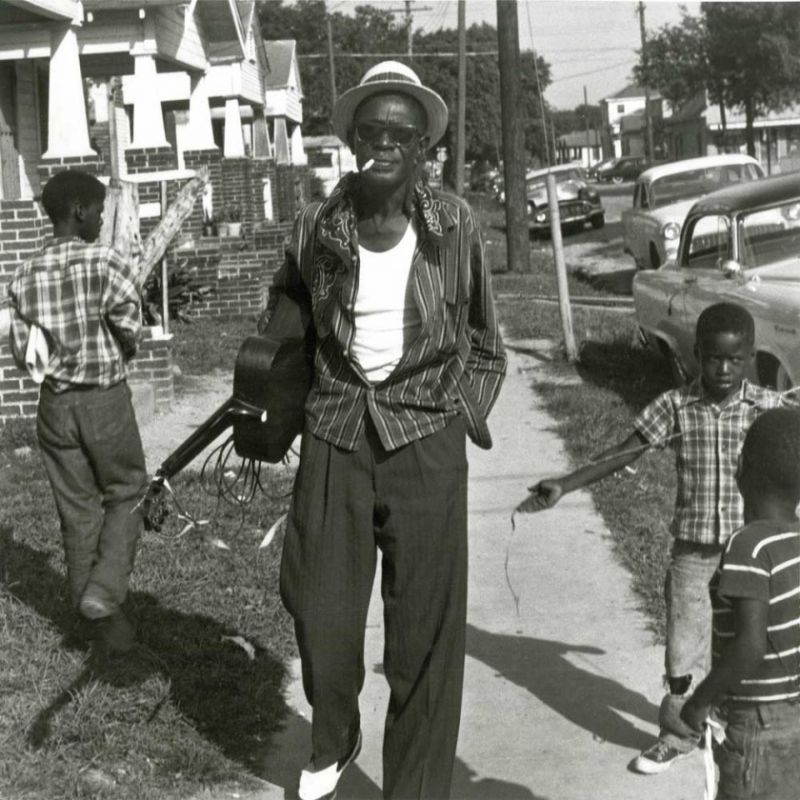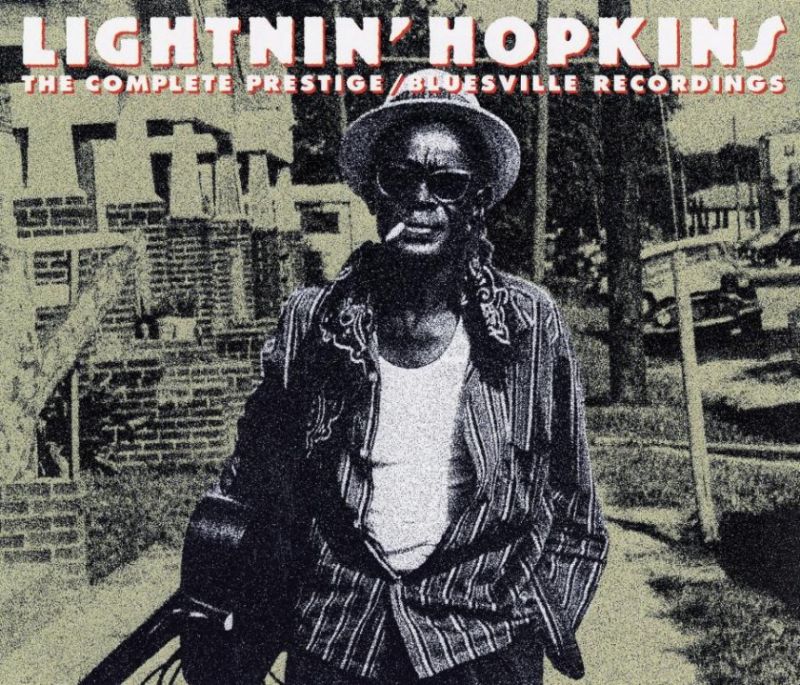
Sam John Hopkins (March 15, 1912 – January 30, 1982), better known as Lightnin’ Hopkins, was an American country blues singer, songwriter, guitarist and occasional pianist, fromHouston, Texas. Rolling Stone magazine included Hopkins at number 71 on their list of the 100 greatest guitarists of all time.
Musicologist Robert “Mack” McCormick opined that Hopkins “is the embodiment of the jazz-and-poetry spirit, representing its ancient form in the single creator whose words and music are one act”
I came to Lightnin’ Hopkins through Townes Van Zandt and Justin Townes Earle (I guess he discovered him through Townes as well…). I was expecting something ancient, something old, but Hopkins sounds modern and his guitar playing is just out of this world!
Sometimes music hit you so hard you simply do not know what happened, Justin Townes Earle did just that when he covered the relatively unknown song, hell, he ripped through a rousing version of Lightnin’ Hopkins’ My starter won’t start (I been burnin bad gasoline). And suddenly I understood what/why Hopkins was held in as high a regard as he does! It was pure magic! (see own post)
Lightnin’ Hopkins – Baby Please Don’t go:
Born Sam John Hopkins in Centerville, Texas, Hopkins’ childhood was immersed in the sounds of the blues and he developed a deeper appreciation at the age of 8 when he met Blind Lemon Jefferson at a church picnic in Buffalo, Texas. That day, Hopkins felt the blues was “in him” and went on to learn from his older (somewhat distant) cousin, country blues singer Alger “Texas” Alexander. Hopkins had another cousin, the Texas electric blues guitarist Frankie Lee Sims, with whom he later recorded. Hopkins began accompanying Blind Lemon Jefferson on guitar in informal church gatherings. Jefferson supposedly never let anyone play with him except for young Hopkins, who learned much from and was influenced greatly by Blind Lemon Jefferson thanks to these gatherings. In the mid-1930s, Hopkins was sent to Houston County Prison Farm for an unknown offense. In the late 1930s, Hopkins moved to Houston with Alexander in an unsuccessful attempt to break into the music scene there. By the early 1940s, he was back in Centerville working as a farm hand.
Hopkins took a second shot at Houston in 1946. While singing on Dowling St. in Houston’s Third Ward (which would become his home base), he was discovered by Lola Anne Cullum from the Los Angeles-based record label Aladdin Records. She convinced Hopkins to travel to Los Angeles, where he accompanied pianist Wilson Smith. The duo recorded twelve tracks in their first sessions in 1946. An Aladdin Records executive decided the pair needed more dynamism in their names and dubbed Hopkins “Lightnin'” and Wilson “Thunder”.
Lightnin’ Hopkins playing ‘That Woman Named Mary‘ from the documentary ‘The Blues According to Lightnin’ Hopkins by Les Blank:
What a story-teller!

“Sam Hopkins was a Texas country bluesman of the highest caliber whose career began in the 1920s and stretched all the way into the 1980s. Along the way, Hopkins watched the genre change remarkably, but he never appreciably altered his mournful Lone Star sound, which translated onto both acoustic and electric guitar. Hopkins’ nimble dexterity made intricate boogie riffs seem easy, and his fascinating penchant for improvising lyrics to fit whatever situation might arise made him a beloved blues troubadour.”
– Bill Dahl (Allmusic)
Hopkins recorded more sides for Aladdin in 1947. He returned to Houston and began recording for the Gold Star Records label. During the late 1940s and 1950s Hopkins rarely performed outside Texas. He occasionally travelled to the Mid-West and Eastern United States for recording sessions and concert appearances. It has been estimated that he recorded between 800 and 1000 songs during his career. He performed regularly at clubs in and around Houston, particularly in Dowling St. where he had first been discovered. He recorded his hits “T-Model Blues” and “Tim Moore’s Farm” at SugarHill Recording Studios in Houston. By the mid to late 1950s, his prodigious output of quality recordings had gained him a following among African Americans and blues musicaficionados.
In 1959, Hopkins was contacted by Mack McCormick, who hoped to bring him to the attention of the broader musical audience, which was caught up in the folk revival. McCormack presented Hopkins to integrated audiences first in Houston and then in California. Hopkins debuted at Carnegie Hall on October 14, 1960, appearing alongside Joan Baez and Pete Seeger performing the spiritual “Mary Don’t You Weep”. In 1960, he signed to Tradition Records. The recordings which followed included his song “Mojo Hand” in 1960.
In 1968, Hopkins recorded the album Free Form Patterns backed by the rhythm section of psychedelic rock band the 13th Floor Elevators. Through the 1960s and into the 1970s, Hopkins released one or sometimes two albums a year and toured, playing at major folk festivals and at folk clubs and on college campuses in the U.S. and internationally. He toured extensively in the United States and played a six-city tour of Japan in 1978.
Houston’s poet-in-residence for 35 years, Hopkins recorded more albums than any other bluesman.
Hopkins died of esophageal cancer in Houston on January 30, 1982, at the age of 69. His New York Times obituary named him as “one of the great country blues and perhaps the greatest single influence on rock guitar players.”
Album of the day, The Complete Prestige/Bluesville Recordings.

Other 15 March:
Ry Cooder is 68! Happy birthday!

Ryland Peter “Ry” Cooder (born March 15, 1947) is known for his slide guitar work, his interest in roots music from the United States, and, more recently, his collaborations with traditional musicians from many countries. His albums are all quite different from each other but at the same time they are distinctly Ry Cooder in their sound.
Jesus on the mainline:
He was ranked eighth on Rolling Stone magazine’s 2003 list of “The 100 Greatest Guitarists of All Time”. He is also a very good composer and a competent vocalist but this is often overshadowed by his tremendous abilities on the guitar.
Great live version of “Vigilante Man”:
Sly Stone (born Sylvester Stewart, March 15, 1943, Denton, Texas) is an American musician, songwriter, and record producer, most famous for his role as frontman for Sly & the Family Stone, a band which played a critical role in the development of soul, funk and psychedelia in the 1960s and 1970s. In 1993, he was inducted into the Rock and Roll Hall of Fame.

Michael Edward “Mike” Love (born March 15, 1941) is an American singer/songwriter and musician with The Beach Boys. He was a founding member of the band along with his cousins Brian, Carl, and Dennis Wilson, and their friend Al Jardine, and continues to perform with the band to the present day. Love, along with the other founding Beach Boy members, was inducted into the Rock and Roll Hall of Fame in 1988.
– Hallgeir

If you listen to the guitar solo on the Crickets’ “That’ll Be The Day” – it’s pure Lightnin’ Hopkins.
I hadn’t though of that, but it is!
thanks!